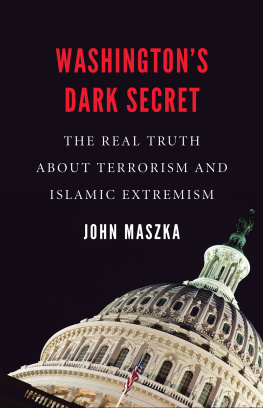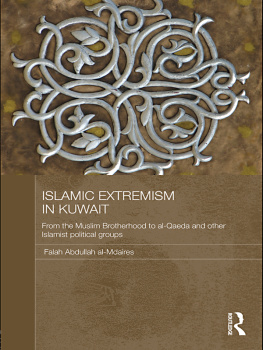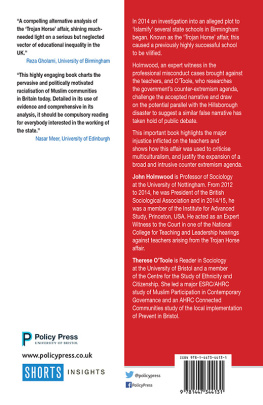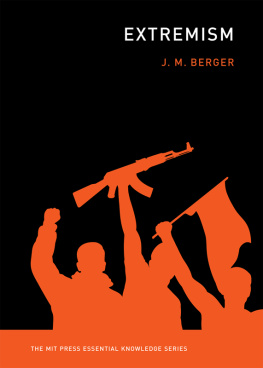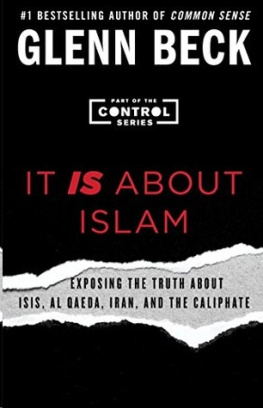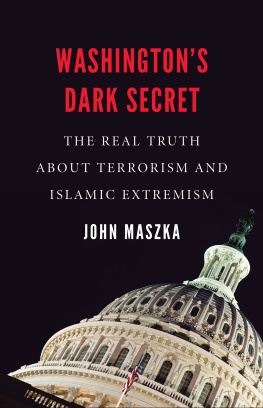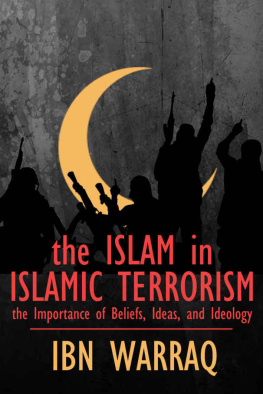2018 by John Maszka
Chapter 7, From Bin Laden to Baghdadi, appears as chapter 2 in Al-Shabaab and Boko Haram: Strategic Terrorism or Guerrilla Insurgency? (Hackensack NJ : World Scientific, 2018). Used with permission from World Scientific Publishing Co. Pte. Ltd.
Cover designed by University of Nebraska Press; cover image iStock.com / mathieukor.
All rights reserved. Potomac Books is an imprint of the University of Nebraska Press.
Library of Congress Cataloging-in-Publication Data
Names: Maszka, John, 1963 author.
Title: Washingtons dark secret: the real truth about terrorism and Islamic extremism / John Maszka.
Description: Lincoln: Potomac Books, an imprint of the University of Nebraska Press, [2018] | Includes bibliographical references and index.
Identifiers: LCCN 2017060419
ISBN 9781640120242 (cloth: alkaline paper)
ISBN 9781640121096 (epub)
ISBN 9781640121102 (mobi)
ISBN 9781640121119 (pdf)
Subjects: LCSH : Terrorism. | Islamic fundamentalism. | Natural resourcesPolitical aspects. | United StatesPolitics and government.
Classification: LCC HV 6431 . M 3785 2018 | DDC 363.325dc23 LC record available at https://lccn.loc.gov/2017060419
The publisher does not have any control over and does not assume any responsibility for author or third-party websites or their content.
For my little boys Rohi and Taavi and my amazing wife (and best friend), May. I thank God for you every day.
This book is written for intelligent, socially conscious people who refuse to accept everything theyre told at face value. Regardless of your profession, your level of education, your race, your ethnicity, or your religion, if youre a critical thinker, then this book is written for you.
Books in generaland particularly books on terrorism or Islamic extremismtend to fall within a certain predetermined style or genre. The authors approach is often singular, following a well-trodden path that is easy to navigate. Books such as these tend to require less imagination from either the writer or the reader, so it shouldnt be all that surprising that many of these books also tend to be, well, lets just say, unimaginative.
Rather than follow the well-trodden path, Ive chosen to blaze a new trail. In the pages that follow, I pursue a fairly ambitious agenda. As a terrorism scholar, Im all too aware of the shortcomings of my disciplineand I detail several of them in this book. I also reveal many of the myths surrounding Islamic extremism and particularly the misnomer Islamic terrorism. However, this book is more than a mere expos of the field of terrorism studies.
Much of the books content deals with two of the worlds most infamous Islamic militant organizationsal-Qaeda and the Islamic Stateas well as the state and corporate powers that brought them into being. As Ill demonstrate, both groups are acting strategically toward the reestablishment of a global caliphate. Yet the strategies these groups employ are polar opposites of each another.
As we progress through the chapters, well explore both the similarities and the differences of these two groups. As we do so, it will become apparent that neither of these organizations exist in a vacuumeach one has grown out of a complex cultural and historical context. It will also become clear that in order to comprehend these groups and their strategic objectives, one needs to have a working knowledge of the economic and political circumstances in which theyve emergedas well as the cultural lens through which they interpret those conditions.
As a terrorism scholar, I employ strategic theory to better understand the goal(s) of those I study. Strategic theory, in turn, requires an in-depth understanding of the individuals or groups under examination. One side of this coin consists of objective fact such as the historical and political context in which the violence occurs as well as the perpetrators socioeconomic position within that context. Objective fact paints only half of the picture, however.
Often its possible to glean enough information from the historical and political context to determine what an actors strategic goal is, but one is still left guessing about other important considerations. The opposite side of the coin is subjective in nature, requiring insight concerning how actors view themselves and those around them. For example, al-Qaeda and the Islamic State share the same strategic goal of establishing an Islamic caliphate, yet they employ very different tactics in pursuit of this goal. They also target different victims. Why?
The answer to this question requires subjective information that sheds light in the shadows. Only by attempting to view these actors and the world through their eyes rather than our own can we begin to see a more complete picture.
A component of this analysis is the theory of perception of the other. Strategy is the use of ones resources toward the attainment of ones goals. Therefore, how an actor perceives its own resources vis--vis the resources of another plays as large a role as the strategic goal itself. Perception also plays a huge role both in the decision to engage in violence and in the way targets and victims respond.
Anyone even remotely familiar with the Holocaust has been confronted with the disturbing compliance demonstrated by both those who collaborated with the Nazis and their victims. Fear of punishment (along with at least some sense of racial superiority) explains much of the former behavior, but how do we explain the passive acceptance displayed by millions of Jews as they faced their own extermination? Objective fact alone provides few answers to such questions.
An equally disturbing question has arisen in more recent years. Why do groups such as the Islamic State and others target fellow Muslims? Even more puzzling is why startling numbers of Westerners have accepted the call to join them. Perception of the other affords us a measure of insight into these challenging realities and is therefore indispensable for understanding how to interpret each groups actions as a means for obtaining their respective goals.
Because everyone shares the disadvantage of viewing the world through a unique cultural lens (however difficult that may be to identify), the larger message of this book is one of reform. Reform of what? Reform of the way people look at themselves, at one another, and also at the world around them.
Throughout history the human race has been graced (and cursed) by the legacy of a myriad of ideas and reforms. On the systemic level, we have religion and philosophy. From the Hindu caste system and Buddhisms oneness with the universe to capitalism, Marxism, and even anarchism, a variety of abstractions have informed how people order society. Beyond these other distinctions such as polytheism, monotheism, collectivism, and individualism all serve to shape and define the great civilizations of the earth.
Which is right and which is wrong? Humans have spilled oceans of blood over these very questions. Millions have fought and died in the war of us versus them. This epic struggle is arguably the worlds first and oldest conflict, pitting brother against brother, father against son, and nation against nation. While battles have been won and lost, the quest for answers continues because, for the most part, were asking the wrong questions.

